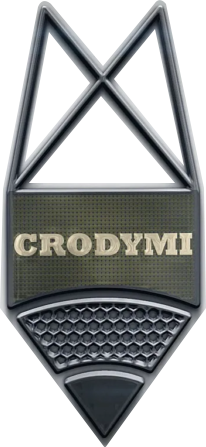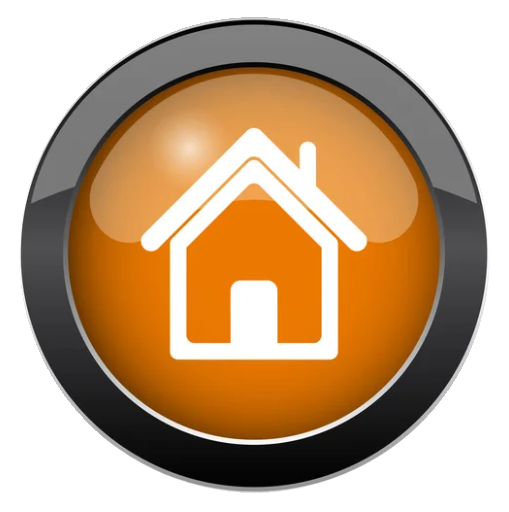Scene Mapping, Scaled Drawings
& Sketches
In the field of accident investigation and legal proceedings, the importance of precise visual representations cannot be overstated. At Crodymi LLC, we specialize in creating detailed car accident maps, traffic accident drawings, and accident scene sketches that accurately depict the events leading up to and following an incident. Our expertise lies in transforming complex accident data into clear, to-scale diagrams that enhance understanding and support legal processes.
Recognizing that police sketches and initial reports may not always capture the full scope of an incident, we offer services to refine and correct these representations. Our team works closely with victims and legal representatives to ensure that every detail is accurately portrayed, addressing any discrepancies found in preliminary sketches. By incorporating precise measurements and spatial relationships, our accident scene mapping services provide a reliable foundation for reconstructing events and establishing facts.
Whether it’s a drawing of a car accident, a comprehensive accident reconstruction drawing, or a detailed accident sketch drawing, Crodymi is committed to delivering high-quality, accurate visual aids. These tools are essential for effective communication, aiding in legal proceedings, insurance claims, and safety analyses. Trust us to transform complex accident data into understandable and precise visual representations that support your needs.SmartDraw
At Crodymi, we specialize in providing comprehensive mapping and sketching services for a wide array of scenes, including crime scenes, crash scenes, worksites, and other similar environments. Our expertise ensures that each scene is documented with precision, capturing every critical detail to support investigations, legal proceedings, and safety analyses.
To achieve the highest level of accuracy and detail in our representations, we employ a variety of advanced technologies:
3D Laser Scanning: This technology allows us to capture dense, accurate surface scans of large-scale spaces, facilitating precise measurements and detailed reconstructions. PMC
Drones: Utilized for aerial imagery, drones provide comprehensive overviews of scenes, especially in expansive or complex environments, ensuring no detail is overlooked. Forensic Technology Center of Excellence
360° Cameras: These cameras enable us to capture immersive, panoramic images, offering a complete visual context of the scene from every angle.
Total Stations and GNSS Systems: These instruments facilitate precise measurement of distances and angles, ensuring accurate mapping and documentation of spatial relationships within the scene.
The deliverables from our services, such as detailed sketches and maps, are designed for longevity and portability. These products serve as permanent records, preserving the integrity of the scene’s documentation for a lifetime. You can utilize them whenever and wherever needed, whether for legal reference, investigative analysis, or safety evaluations, ensuring that critical information remains accessible and unaltered over time.
Select a Service
The Crucial Role of Sketching in Investigating Crime Scenes, Motor Vehicle Collisions, and Accident Scenes.
Introduction
In forensic investigations, sketching serves as a vital instrument for documenting and analyzing accident and crime scenes. Beyond its traditional role in design, sketching aids in reconstructing events, preserving evidence, and conveying complex scenarios effectively.
Accurate Representation: Sketches provide precise depictions of accident scenes, capturing spatial relationships and the positioning of evidence. This accuracy is crucial for reconstructing events and understanding the context of incidents. While photographs document visual details, accident scene mapping and accident reconstruction drawings offer complementary perspectives by illustrating measurements and spatial arrangements, ensuring a comprehensive understanding of the scene. Photographs can sometimes distort distances and spatial relationships, but accident sketch drawings allow for the correction of these perceptions, providing a more accurate representation of the scene’s layout. Detailed sketches facilitate clear communication among investigators, legal professionals, and jurors, aiding in the visualization of complex scenarios and supporting the narrative of events. They serve as enduring records of the scene, preserving details that might be overlooked or forgotten over time, and ensuring that critical information remains accessible for future reference.
Commonly Used Sketching Techniques in Accident Documentation: Various techniques are employed to enhance the accuracy and clarity of accident scene drawings. The triangulation method utilizes two fixed points to measure the locations of evidence, creating a triangle that allows for precise plotting on a car accident map. The baseline method involves establishing a straight line between two fixed points and measuring distances along this line and perpendicular to it to locate evidence, aiding in the creation of detailed traffic accident drawings. The polar coordinate method employs a fixed point and measures the distance and angle from this point to the evidence, useful in outdoor scenes where establishing a straight baseline is difficult. The rectangular coordinate method is beneficial in scenes with perpendicular landmarks, involving measurements along two axes to accurately plot evidence positions on a map of accidents. The cross-projection method combines plan and elevation views by unfolding walls onto the floor, providing a comprehensive representation of evidence located on or near walls. These techniques ensure that sketches are not only accurate but also standardized, facilitating effective analysis and communication.
Longevity and Utility of Forensic Sketches: The sketches produced through these methods are crafted to endure, serving as permanent records that can be revisited whenever necessary. Their enduring nature ensures that they remain valuable tools for reference, analysis, and presentation in various contexts, including legal proceedings and investigative reviews. In conclusion, sketching is an indispensable component of forensic investigations, offering clarity, precision, and a lasting visual record of accident and crime scenes. Its role in documenting, reconstructing, and communicating complex scenarios underscores its significance in the investigative process.
For example click here

Preservation of the Scene:
Sketching serves as a valuable method for preserving the scene in its original state. It allows investigators to capture the spatial relationships between various elements, ensuring an accurate representation that can aid in reconstructing events later. Accident scene mapping and accident reconstruction drawings also help victims or witnesses explain a particular scenario to others. By illustrating the positions of vehicles and other pertinent details, these visual aids enhance understanding and communication among all parties involved. SmartDraw

Comprehensive Documentation:
Sketching complements other forms of documentation, such as photography and written reports. It provides a visual summary that can be easily interpreted, helping investigators understand the scene's layout, distances, and key features. Accident scene mapping and drawing of car accidents enhance the clarity of investigative findings by illustrating spatial relationships and the positioning of evidence. Traffic accident sketches and car accident sketches help visualize critical details and aid in accident reconstruction drawing, ensuring a more accurate representation of the scene. These visual aids are essential for effectively communicating the event’s specifics to investigators, legal professionals, and jurors. Additionally, sketches serve as enduring records, preserving details that might be overlooked or forgotten over time, ensuring they remain valuable for ongoing analysis and legal proceedings.

Enhanced Communication:
A well-drawn accident sketch acts as a universal language for investigators, facilitating communication among team members and other stakeholders. It bridges gaps in understanding and ensures that everyone involved in the investigation shares a common visual reference, such as a car accident map or a traffic accident sketch. By clearly illustrating the layout and key features of the scene, accident scene mapping helps investigators, legal professionals, and jurors grasp important details quickly. Accident reconstruction drawings and sketches of car accidents ensure that the information is conveyed effectively, improving coordination and decision-making throughout the investigative process.

Witness Testimony Support:
When presented in court, a detailed accident sketch drawing can assist witnesses in recalling and describing events more accurately. Car accident drawings and traffic accident sketches help clarify the sequence of events, making it easier for jurors to visualize and understand the case. By providing a visual representation of the accident scene mapping, these sketches ensure that all details are communicated clearly, leading to a more accurate understanding of the circumstances surrounding the incident.

Accurate Measurements:
Sketching allows investigators to record precise measurements of distances, angles, and other spatial parameters, such as the drawing of road accidents. This information is crucial for accident reconstruction drawings and aids in determining factors such as speed and trajectory. Road accident drawings help to clarify the positioning of vehicles and objects, supporting the process of accident scene drawing. By accurately documenting the scene, these sketches provide valuable data for reconstructing the accident and understanding its dynamics.

Crime Scene Reconstruction:
Sketches play a vital role in reconstructing crime scenes, such as accident car drawings. By combining physical evidence, witness statements, and expert analysis, investigators can recreate the sequence of events leading up to a crime. Accident sketch drawings provide a visual representation that enhances the clarity of the investigation, helping to determine critical details such as the positions of vehicles or objects involved. This contributes to a more comprehensive understanding of the scene and is essential for accurate accident scene mapping and accident reconstruction drawing.

Documentation of Evidence:
Sketching plays a pivotal role in meticulously documenting crime scenes, ensuring that all evidence—including physical objects and patterns such as blood spatter—is accurately recorded and spatially represented. This process is essential for preserving the chain of custody and facilitating the presentation of a coherent case in court. By integrating crime scene sketches with other forms of documentation, investigators can create a comprehensive visual record that enhances understanding and supports the judicial process.

Timely Analysis:
Drawing of road accidents provides investigators with an immediate tool for on-site analysis. While waiting for more advanced forensic analysis, a preliminary sketch can help identify key areas and patterns that require further examination.

Training Tool:
Sketching is an invaluable training tool for forensic investigators. It helps hone their observational and analytical skills, fostering a deeper understanding of the intricacies involved in crime scene interpretation.

Clarity in Motor Vehicle Collision Investigations:
In motor vehicle collision investigations, sketching aids in representing the positions of vehicles, road conditions, and traffic elements. This clarity is essential for determining fault, understanding contributing factors, and improving road safety.

Multi-Disciplinary Collaboration:
Sketches serve as a medium for collaboration between various experts involved in an investigation, including forensic analysts, accident reconstruction specialists, and law enforcement. This interdisciplinary approach ensures a comprehensive and accurate representation of events.

Courtroom Presentation:
Perhaps most importantly, sketches serve as powerful visual aids during courtroom presentations. They assist legal professionals in explaining complex scenarios to judges and juries, making the evidence more accessible and persuasive.
Conclusion:
In conclusion, sketching is an indispensable tool in forensic investigations, tribunals, and classrooms, playing a crucial role in documenting crime scenes, motor vehicle collisions, and accident scenes. Its multifaceted benefits, ranging from preservation and documentation to enhanced communication and courtroom presentation, underscore the significance of this technique in unraveling the complexities of incidents. As technology continues to advance, sketching remains a timeless and essential skill in the investigator’s toolkit, ensuring that justice is served through a thorough and accurate understanding of the events in question.
When it comes to anything from a car accident map to a detailed car accident sketch, Crodymi stands out as the best go-to option for precision, professionalism, and expertise. Whether you’re trying to map accidents, analyze a map of accidents, or view a map of car accidents for legal or insurance purposes, Crodymi delivers accurate and easy-to-understand visuals. Our team creates high-quality drawing of road accident scenes, realistic traffic accident drawing, and courtroom-ready car accident drawing materials tailored to each case. Every drawing of a car accident, drawing of car accident, or accident car drawing we produce captures the critical details needed for investigations and legal clarity. From a simple road accident drawing to a complex accident sketch draw, we offer unmatched quality and consistency. Choose Crodymi for your accident sketch, car accident sketch, traffic accident sketch, sketch car accident, and accidents sketch needs—because when it matters most, accuracy and trust are everything.
For more info or to get a free Quote: Click here to contact CrodymiIn addition, Crodymi also do diagnostic checks of vehicles to present information about faults, particularly freeze frame data.
M.S., B.S.
Date: Nov 15, 2023

